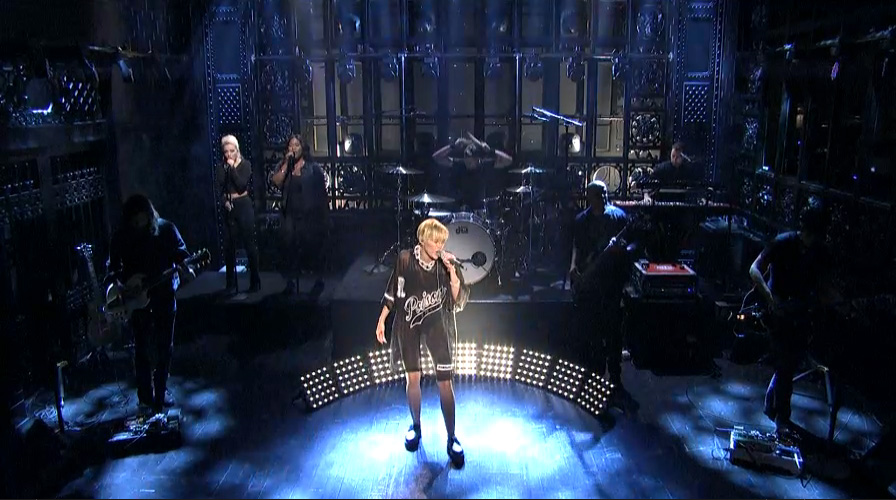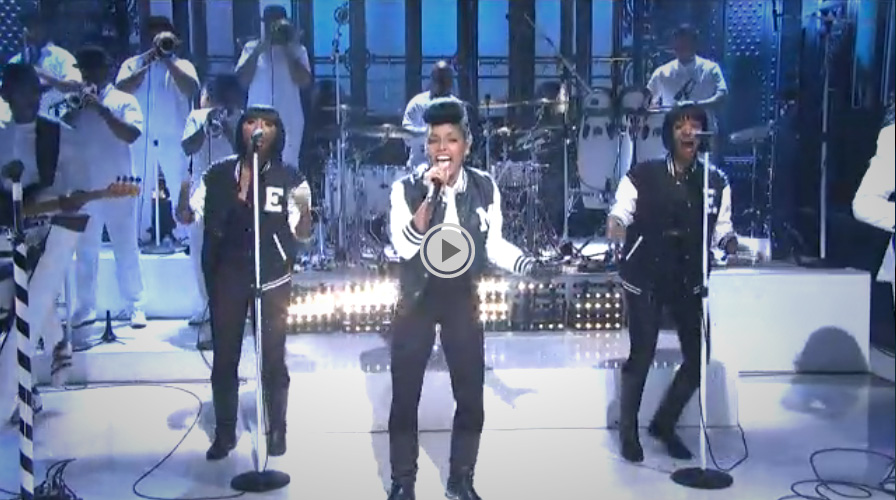Jim Krause | Classes | C228 Multi-Cam TV Studio Production 1
Week 11
Agenda
- Review Scripts, and Rehearsals
- Capturing Live Performances
- Next week: Legal and IP (intellectual property) issues
Announcements/Reality Check
- Quiz #4 this week in lab. It will cover Scripts, Rehearsals, Production People, and a bit of visualization (camera strategy).
- Demonstration VIdeos (2nd set) this week in lab.
- Pitch Final Projects this week for our last production for weeks 14 & 15 (A wellness day falls on Thursday 4/22)
- Next week: Produce Dramatic/Comedic Scenes
Readings: Just review the on-line lecture notes
Review Scripts & Unions ------------------------------------------------
Scripts ------------------------
Script formats (there are many types of scripts- often you need more than one) Students should be able to identify at least three different scripts and describe their purpose. You'll need a script before you produce your upcoming Dramatic/Comedic Scenes.
- Two-Column (sometimes referred to as the Fully Scripted format): It usually contains at least two columns with visuals on the left and audio on the right, and includes every piece of dialog, every single shot, VTR cues) They are useful for ads, corporate, and feature/documentary. One good reason to use this format is that every single shot and sound is accounted for in the script. You can jump to anywhere in the script and read what we'll be seeing and what we'll be hearing.
Examples:- Documentary script (Maggie's Diner)
- Multi-Camera Script (Studio 5 Camera Challenge)
- Semi-Scripted: indicates only partial dialogue. The opening and closing remarks are included. Our Studio 5 Perspectives talk show is a good example
- Drama Script (also known as a Film Script or Master Screenplay): This single-column format focuses on dialogue and action, not specific camera instructions.
Examples:- BBC template/example)
- There are some well known scripts at: filmscriptwriting.com/sample-scripts/.
- Rundown (also known as Show Format): This is used for live TV and radio production and its rows and columns look similar to a spreadsheet. It can contain as little or as much info as needed. One could use it to show only segments and running times, or it can be more detailed with camera shots and teleprompter copy.
Examples:
Unions -------------------------------
Many performers, writers, editors, directors, and actors belong to a guild or union as do technical personnel.
It's important to not only be aware of various unions, but be familiar with their policies for safety, breaks, and work parameters.
Non Technical Unions
- Actor's Equity Association - American actors and stage managers in the theatre. (Affiliated with the AFL-CIO)
- SAG - AFTRA Screen Actors
Guild - American Federation of
TV and Radio Artists.
- These two unions merged in 2012
- Screen Actors Guild was the major union for screeen talent.
- Aftra was the major union for TV talent.
- These two unions merged in 2012
- AGMA American Guild of Musical Artists. The major union for stage singers. It represents opera and concert singers, production personnel and dancers at principal opera, concert and dance companies throughout the United States. (Affiliated with the AFL-CIO)
- AFM American Federation of Musicians of the US and Canada. The major union for musicians.
- DGA Directors Guild of America
- WGA Writers Guild of America
Technical Unions
- IBEW International Brothers of Electrical Workers
- NABET National Association of Broadcast Employees and Technicians - A subset of the Communication Workers of America
- IATSE International Alliance of Theatrical Stage Employees and Moving Picture Machine Operators of the US and Canada. This is the major union for grips, costume, and various technicians who work in the broadcast and film industry.
Producing & Directing Multi-camera Performance Pieces
Performances are frequently captured with multiple cameras for TV. Examples include dance, comedians, 1-person monologes, and musical performances.
- Dance is the most challenging, as the subjects are constantly moving. TV is a close-up medium, and it's nearly impossible to capture a tight shot of a dancer unless the dance has been carefully analyzed in advance of the production, or blocked specifically for the camera. Watch Dancing with the Stars and you'll see that they stay usually on wide shots. To keep it interesting they incorporate motion and create elaborate production setups. Compare this with a single-camera tango scene from a movie. In the movie they've carefully broken down the dance and blocked it in terms of camera coverage.
- Comedians and 1-person monologues (E.g. TED Talks) are easier to capture, as the subject is not moving as much.
- Musicians are also relatively easy to cover, since they are often locked into position (behind a piano, drumset, etc.)
Lighting - Just like a news or talk show, you want your performers to stand out from the background. A couple of stops difference is nice to get. Lead performers should be a little brighter (E.g. one stop) than the backup performers. Here are a few exampled from SNL:
Camera Coverage Strategy - Regardless of the type of performance, the multi-camera director can employ techniques to make capturing the performance easier. The main thing you need is a camera strategy assuring proper coverage without jump cuts. This means your cameras will not have the same types of shots. Each camera willl have a different shot to contribute to the mix. Example for a guitarist captured with multi-cameras:
- Cam 1 - MS performer (on the right side of the frame looking left)
- Cam 2 - CU performer (on the left side of the frame looking right)
- Cam 3 - ECU (left hand fingers or right hand picking/strumming)
- Cam 4 / Jib - Always beautiful moving wide shot
You will have to work for this because camera operators almost always want to pull out to a wide shot.
Safety (wide) shot. In our studio we have a jib. Get a good jib operator to find a few moves that look great, and simply have them repeat these throughout the performance. Avoid diagonal moves- stick with arm up and down and sweeps left and right.
2 Shots and Medium Shots - Always have a medium shot or 2-shot to go to. This might be both musicians of a duo, or a medium shot of a solo performer.
Medium Close-Ups - Position your cameras so you get flattering/favorable angles of the performer(s). Make sure the eyelines converge. So someone on the left side of the frame will look right. Someone on the right side will be looking left.
CU & ECU - Have a camera stay tight on the playing, singing, drumming, etc.
Use the rule of thirds to frame the subject(s) on alternating left and right sides. For example you can have a medium shot of them framed on the right side and cross-dissolve to a close-up on the left. Don't center the subjects for cross-dissolves or they will look bad.
Before Recording - Run through the song with a timer. Pay attention to how the song starts and ends. Note (write down) the times when the verses, choruses, and solos are. The Assistant Director can help with this and with getting shots setup in time.
Think about the transitions. Slower tunes might call for dissolves and quicker ones cuts. Be consistent.
Examples ---------------------------
- Historic Joni Mitchell - Big Yellow Taxi - Both Sides Now
- SNL: Miley Cyrus "Wrecking Ball"| Beck "Blue Moon"
- Jimmy Fallon: With the muppets playing "The Weight"
- Carrie Newcomer example (Shot in Studio 5):
- Bela Fleck Example:
- Austin City Limits does an excellent job with these.
If possible, ISO roll the cameras to open up possibilities in edit. This means that each camera has a dedicated recorder. Camcorders make this easy. If this is the case and you are going to edit it later, be sure sync all the timecode signals of the various cameras. This is also the time you may want to use free running timecode, as opposed to record running timecode. Do you know the difference?
Multi-camera dance:
- Dancing with the Stars (Rumer & Val)
- Dancing with the Stars (Bethany & Derek)
- 2003 Tony Awards segment
Ted Talks
Lab --------------------------------------------------------------
Learning Objectives:
- Give students practice producing their own show
- Have fun in the process!
Agenda:
- Attendance
- Quiz #4
- Pitch Final Projects (must select projects- likely only one per lab. The Thursday labs only get to produce one, due to Wellness Day 4/22)
- Produce Demonstration Videos
- Talk about next week's production(s)
- Wrap




